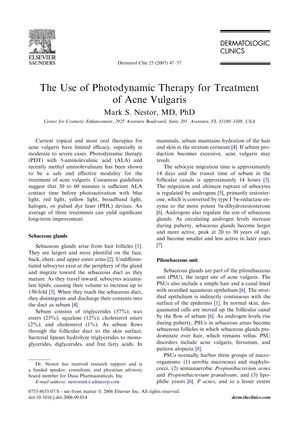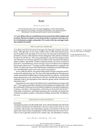The Use of Photodynamic Therapy for Treatment of Acne Vulgaris
January 2007
in “Dermatologic Clinics”

TLDR Photodynamic Therapy is an effective treatment for mild to severe acne.
The 2007 document highlights Photodynamic Therapy (PDT) as a promising treatment for acne vulgaris, offering a multifaceted approach that targets several factors contributing to the condition. PDT utilizes photosensitizers like 5-aminolevulinic acid (ALA), which are activated by light to destroy abnormal cells. A study within the document treated 22 subjects with mild to moderate acne using ALA-PDT, resulting in clear skin for 10 to 20 weeks post-treatment, with temporary side effects such as hyperpigmentation and exfoliation. The treatment was shown to reduce sebum excretion, suppress bacterial fluorescence, and damage sebaceous glands. A 2005 consensus conference recommended ALA-PDT particularly for inflammatory and cystic acne, with a protocol involving pretreatment with microdermabrasion or an acetone scrub, followed by 30 to 60 minutes of ALA application before light activation. The document concludes that ALA-PDT is effective for mild to severe acne by affecting three of the four pathogenic factors of acne, but further research is needed to optimize treatment parameters and determine the most responsive patient groups.
View this study on doi.org →
Cited in this study

research Acne
Acne affects most teenagers and can continue into adulthood, with various treatments available that show improvement but have concerns like antibiotic resistance and side effects.